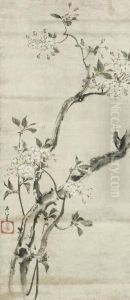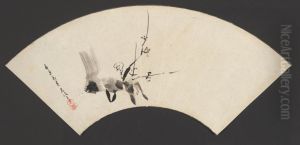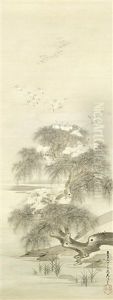Kita Busei Paintings
Kita Busei was a Japanese painter born in Tokyo, Japan. He played a significant role in the art world of Japan, particularly during the Showa period, contributing to the development of both Western-style painting (yōga) and Japanese-style painting (nihonga) in Japan. His works often reflected a blend of both traditional Japanese aesthetics and Western artistic techniques, which was common among many Japanese artists of the time as they grappled with the merging of East and West.
Throughout his career, Kita Busei was known for his versatility and experimentation with different styles and themes. He was educated at the Tokyo School of Fine Arts, which was a hub for fostering talent and innovation in various art forms during the early 20th century. Busei's exposure to different art movements, as well as the dynamic cultural shifts in Japan during his lifetime, influenced his approach to art and allowed him to adapt and thrive as an artist over several decades.
During his lifetime, Kita Busei exhibited his work in many important exhibitions and was recognized for his contribution to the art world with several awards. His paintings are characterized by their refined technique and often convey a sense of serenity and contemplation. Despite his prominence in the Japanese art scene during his lifetime, Kita Busei, like many artists of his era, faced the challenge of navigating the art world during times of political and social upheaval, including World War II and the subsequent occupation of Japan.
After a long and prolific career, Kita Busei passed away in 1993. Today, his works are preserved in various collections, including museums and galleries in Japan, serving as a testament to the rich cultural heritage of Japanese art in the 20th century. His legacy continues to influence contemporary artists in Japan and contribute to the discourse on the integration of different artistic traditions and practices.


